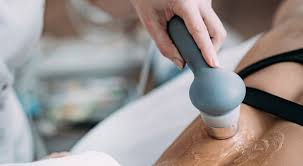Cycling Ergonomics - A Quick Guide Before you Ride
- Nicolas Pahud

- Apr 25, 2022
- 2 min read
Cycling is a unique sport due to the combination of extreme postural inertia of the upper and lower body with at times excessive and repetitive load on the lower limbs.

Therefore, prior to spending anytime in the saddle this summer we want to ensure you are positioned appropriately on your bike to help reduce any unwanted strain. Factors that you should quickly consider when assessing your bike set up include seat height, seat fore/aft position and reach. These are three simple things you are quickly able to adjust before heading out which can significantly reduce the risk of cycling discomfort during a ride.
Seat Height
Incorrect seat height has several potential sequelae. If the seat is too high, power output is diminished because the lower limb muscles must work beyond their optimal length-tension range. Also, there develops excessive stress on the hamstrings, calves and posterior knee joint capsule.

Conversely, a low seat increases knee flexion throughout the pedal cycle and increases patellofemoral and suprapatellar loading (areas above and below the knee cap). It also places the hamstring, gluteal muscles and gastrocs in a suboptimal length-tension relationship.
To quickly ensure the seat height is adjusted correctly, your knee should be slightly flexed/bent between 25 and 35 degrees at the bottom of the pedal stroke while your foot sits flat on the pedal. You can also use the renowned cyclist Greg Le Mond method and multiply your in-seam by 0.88. This will roughly approximate the measurement from the centre of your bottom bracket to the top of the seat.
Seat Fore/Aft Position
Fore and aft position is important for knee loading and the seat position will also affect hip flexion and gluteal-hamstring muscle length . A seat too far forward will result in increased patellofemoral compression forces. The knees become more flexed, the hips

more extended and the muscles of the lower limb are at a less than optimal length tension relationship. In addition, the more upright position is less aerodynamic. If the seat is too far back, the hamstring and gluteal muscles will be over lengthened which appears to inhibit force production.
A recent biomechanical study suggested that 10-15% of anterior inclination reduces low back pain in cyclists but further study of this matter is required.
Your saddle fore/aft position is set by placing your knee directly above the pedal with the crank at the 3 o'clock position. Visually your kneecap should be directly over the pedal. This will position your hip and knee joint over the drivetrain of the bicycle.
Reach
Reach is the horizontal distance from the centre of the bottom bracket to the middle of

the head tube. The reach measurement has probability the most variability with set-up. The measurement will depend on the rider's flexibility, experience, comfort and desired bike-handling. With good positioning, the set-up allows the cyclist to attain an anteriorly tilted pelvis, a flat unkinked back without excessive spine curvatures, retracted scapulae, unlocked elbows and relaxed upper limbs. Most literature suggests having the elbows bent to approximately 15 degrees and shoulders held at 90 degrees in relation to the torso.
So before your next ride try these 3 simple adjustments to help out where ever the road might take you.




Comments